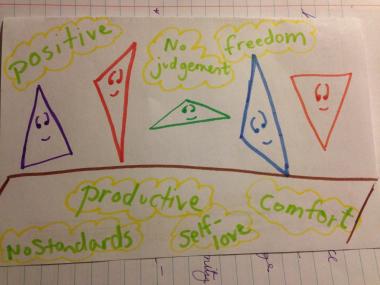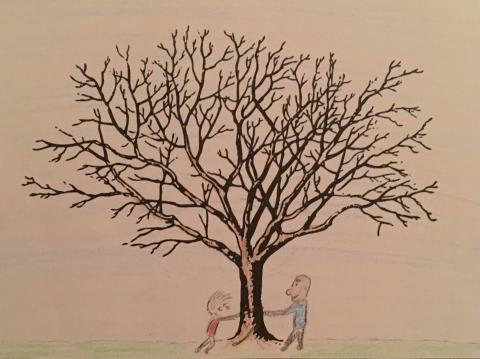Field Notes - 4/6/2016
By smalinaApril 9, 2016 - 10:17

This past Wednesday we returned to the center to continue work on our boxes. When the artists came back from their snack break, we split off into our pairs, and made a kind of assembly line to get things done--although Carl* and I had to work on our project alone, since we were a little bit behind after I missed a week. We used one of the tools to carve our legs into fun, curvy shapes, and I rode the stationary bike for a *long* time. While we did that, another pair worked on cutting the pegs for all of the boxes, so that we could attach the legs with wood glue. When we finished our leg cutting, we took a brief musical interlude (I made some beats on the table with the wooden legs and Carl and I danced).








